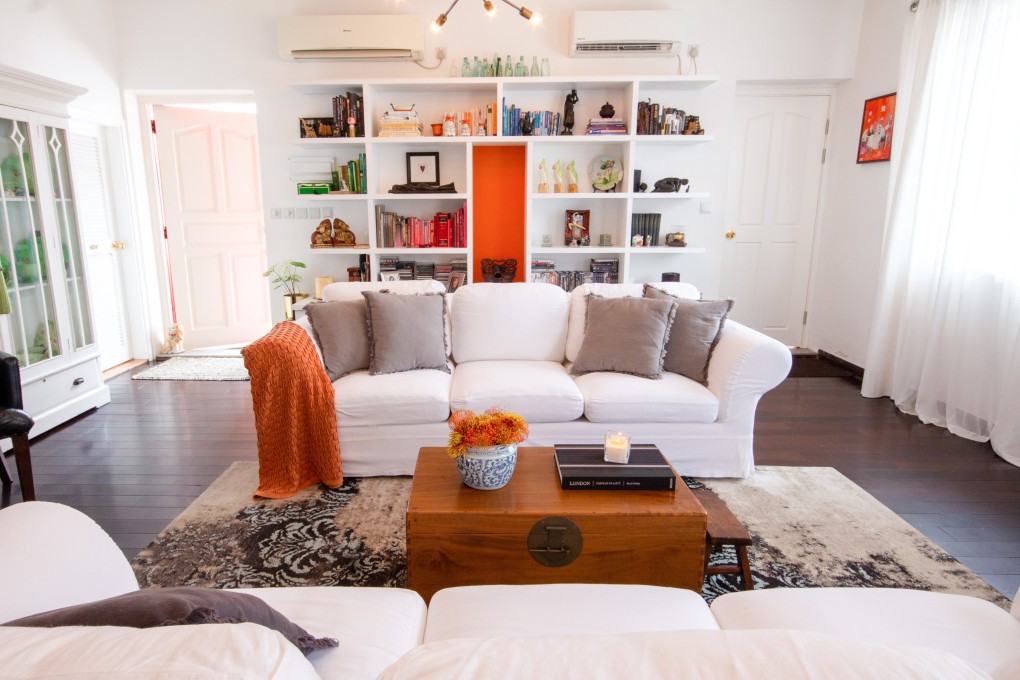How the Instagrammable East meets West home of Macau egg tart pioneers oozes charm and caprice
- Having taken over the Coloane red house from her late brother, Eileen Stow of Macau’s Lord Stow’s Bakery set about updating the interiors to make them her own
- Bold colours mix with pastels as easily as antiques share space with the contemporary

There is much to unpack in Eileen Stow’s colourful residence in Coloane village, Macau.
The siblings’ histories are also intertwined in that 1,400 sq ft (130 square metre), one-bedroom house, which had once been her brother’s rental home. Eileen moved in after Andrew’s unexpected death, from an asthma attack, in 2006. She completed the vivid paint job he had begun on its exterior, and gradually updated its interiors to make them her own. “I set a budget each year to improve it,” she says, remembering the wood flooring installed upstairs, rustic tiles on the ground floor, and a pergola on the roof.
Her efforts have not gone unnoticed. A favourite of Instagramers, the facade of the Coloane red house has served as an arresting backdrop for innumerable newlyweds and tourists. But unfortunately, the building’s draw has also fed the imagination of her landlord.
Last September, just weeks after Stow had given the interior walls of the ground floor another new coat of white paint, she received notice to vacate the property. “I’ve made the house look so beautiful that it’s got a great deal of attention,” she says in a follow-up interview many moons after our initial conversation. “And now they want to turn it into a cultural centre.”
The building has come a long way since Andrew started working on what was originally, she says, “a very unattractive old warehouse”. At the back of his mind was Helga’s Folly in Sri Lanka, a 1930s crimson home (now hotel) described variously in online reviews as a “palace of whimsy” and an “acid trip” full of art and memories.
